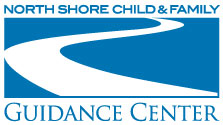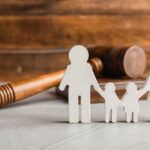Do you think childhood trauma is a relatively rare occurrence? Here are just a few statistics to change that perception:
- More than a quarter (26%) of children in the United States will witness or experience a traumatic event before they turn four.
- 60% of adults report experiencing abuse or other difficult family circumstances during
childhood. - In one year, 39% of children between the ages of 12 and 17 reported witnessing violence; 17% reported being a victim of physical assault; and 8% reported being the victim of sexual assault.
- More than 60% of youth age 17 and younger have been exposed to crime, violence and abuse either directly or indirectly.
According to the National Institute of Mental Health, childhood trauma is defined as “the experience of an event by a child that is emotionally painful or distressful, which often results in lasting mental and physical effects.”
Jennifer Pearlman, LMHC, who works at North Shore Child & Family Guidance Center’s Intensive Support Program through Nassau B.O.C.E.S, explains some of the common causes of trauma in children. “Sexual, physical or emotional abuse—especially when it is repeated and/or ongoing—can cause serious mental health challenges both during childhood and as the child matures into adulthood,” she says. “Problems can also develop when a child experiences chronic illnesses, loss of a loved one, bullying, serious accidents and poverty.”
Trauma can also occur when a child is witness to violence or even regular, intense verbal fighting by their parents or caregivers.
“A child who has been traumatized may be living as if they are in a constant state of danger,” says Pearlman. “Their bodies and minds are always on high alert, which means they often experience the flight, fright or freeze response more commonly associated with soldiers who have been diagnosed with PTSD [Post Traumatic Stress Disorder]. They never feel safe.”
There are many symptoms associated with trauma in children, including anxiety, anger, difficulty sleeping, poor self-image, acting out, feelings of guilt, school refusal and obsessive or compulsive behaviors. Sometimes, trauma in early years can lead to learning disabilities and, in some cases, to violent behaviors—especially when the child was the victim of abuse.
“If a child is chronically abused, it’s all they know of the world,” says Pearlman. “They may have difficulty expressing emotions, and their behavior can be unpredictable, volatile or extreme.”
The good news is that, with proper treatment, children and teens can heal from trauma and live healthy, happy lives. That treatment might include individual, group and/or family therapy; cognitive behavioral therapy; relaxation and mindfulness techniques; neurofeedback; and other methods.
“Children who’ve experienced trauma are not bad or broken or flawed,” says Pearlman. “There are many different therapeutic approaches that, by themselves or in combination, can make a huge difference.”
If your child is experiencing the effects of trauma, we can help. Contact North Shore Child & Family Guidance Center at (516) 626-1971, or email info@northshorechildguidance.org. If you are seeking an academic environment for your child or teen that offers extensive therapeutic services, ask about our Intensive Support Program, which offers intensive mental health services on-site at three Nassau B.O.C.E.S. schools for children, ages 5-21, and their families from all 56 Nassau County school districts.
Sources:
www.nctsn.org
www.samhsa.gov/child-trauma/understanding-child-trauma
www.tfcbt.org
















